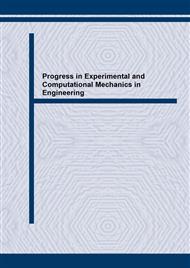[1]
T.S. Cook and F. Erdogan: Stresses in bonded materials with a crack perpendicular to the interface. Int. J. Engineering Science Vol.10 (1972), p.677
DOI: 10.1016/0020-7225(72)90063-8
Google Scholar
[2]
F. Erdogan and V. Biricikoglu: Two bonded half-planes with a crack going through the interface. Int. J. Engineering Science Vol.11 (1973), p.745
DOI: 10.1016/0020-7225(73)90004-9
Google Scholar
[3]
M.C. He and J.W. Hutchinson: Crack deflection at an interface between dissimilar elastic materials. Int. J. Solids and Structures Vol.25 (1989), p.1053 �
DOI: 10.1016/0020-7683(89)90021-8
Google Scholar
[4]
Y. Sugimura, P.G. Lim, C.F. Shih and S. Suresh: Fracture normal to a bimaterial interface. Acta. Metall. Mater. Vol.43 (1995), p.1157
DOI: 10.1016/0956-7151(94)00295-s
Google Scholar
[5]
A.S. Kim and S. Suresh: Plasticity effects on fracture normal to interfaces with homogeneous and graded compositions. Int. J. Solids Structures Vol.34 (1997), p.3415
DOI: 10.1016/s0020-7683(96)00225-9
Google Scholar
[6]
F.O. Riemelmoser and R. Pippan: The J-integral at Dugdale cracks perpendicular to interfaces of materials with dissimilar yield stresses. Int. J. Fracture Vol.103 (2000), p.397 ������ � �
Google Scholar


